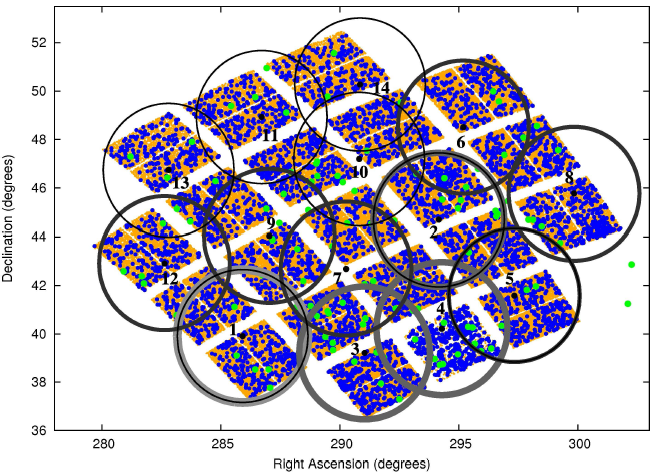You are here
LAMOST observations in the Kepler field. I. Database of low-resolution spectra
The NASA Kepler satellite has provided unprecedented high duty-cycle, high- precision light curves for a large number of stars by continuously monitoring a field of view in Cygnus-Lyra region, leading to great progress in both discovering exoplanets and characterizing planet-hosting stars by means of asteroseismic methods. Although the asteroseismic survey allows the investigation of stars covering the whole H-R diagram, the low precision of the effective temperature, surface gravity and metallicity provided in the Kepler Input Catalogue and the lack of information on the chemical composition and rotation rate prevent asteroseismic modeling, requiring spectroscopic observations for thousands of asteroseismic targets in the Kepler field in a homogeneous way.
In 2010, we initiated the LAMOST-Kepler project which aimed at collecting low-resolution spectra for objects in the Kepler field of view with the Large Sky Area Multi-Object Fiber Spectroscopic Telescope (LAMOST), a 4-m telescope equipped with 4,000 optical fibers. All of the requested fields have been observed at least once, resulting in more than 100,000 low-resolution spectra for 80,447 stars. The stellar atmospheric parameters are then derived with the qualified spectra. The data created by the LAMOST-Kepler project can be not only used for asteroseismic study for thousands of stars in the Kepler field of view, but also of high scientific value for the other astronomical fields, such as exoplanet-host stars, stellar activities and flares, and particular stars, etc., especially for the large community involved in the Kepler research.

Targets of scientific interest in the field of view (FOV) of the Keplermission. The black dots refer to the centers of the 14 LK-fields that cover the KeplerFOV. The following color coding is used: green for standard targets, blue for KASC targets, and orange for planet targets. The LK-fields observed in 2011–2014 are indicated by the circles drawn with a full line going from thick to thin and from gray to black, respectively.
